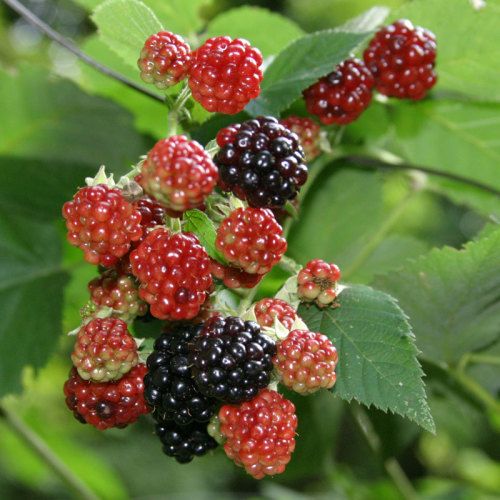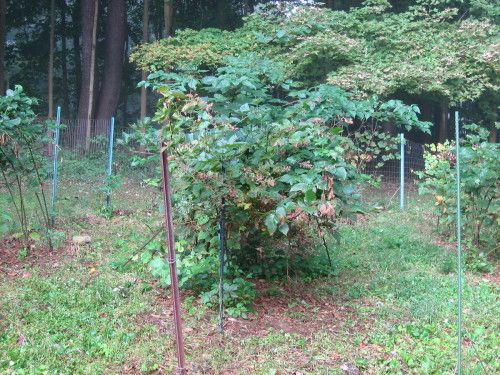
Wild blackberries are a treat, but unless you encase yourself in protective clothing, your arms and legs will be bloodied by the thorns. So when I noticed thornless blackberries in a catalog a few years ago, I was eager to give them a try.
I decided to order plants from Nourse Farms in Deerfield, Massachusetts. Unable to settle on a variety, I asked them to send me the one best suited to my region (southwestern Connecticut), and they chose ‘Chester’.
My five plants arrived in early spring, and I planted them about 4 ft. apart, as recommended in Nourse’s planting guide. I built a simple trellis of metal fence posts and wire to support them. Incredibly, my resident deer took a fancy to the new canes, so I hastily enlarged my orchard fencing to include them. My fence won’t win any design awards, but I can live with that, now that the deer are on the outside looking in.
Both thorny and thornless blackberries bear fruit on second-year canes. But that’s where the similarity ends. ‘Chester’ forms huge arching canes and astonishingly large berries.
To keep the plants accessible and productive, a little pruning is in order. In late fall or winter, you remove canes that bore fruit the previous year. In early summer, you can trim the ends of the first-year canes to encourage the formation of fruit-bearing side shoots.
At my place, fruit starts to mature in late August and continues for several weeks. The fruit may look ripe, but it isn’t really ready unless the berries come right off with little pressure. You don’t need to pick every day, just two or three times a week. Picking, sans thorns, is painless and relaxing.
What to do with these tasty berries? We turn them into jam (a specialty of my son’s), cobbler, coolers, and smoothies, or just eat them fresh. Blackberries can also be frozen for use in the winter (spread on a cookie sheet in a single layer, then transfer to a plastic bag).



















Comments
Log in or create an account to post a comment.
Sign up Log in